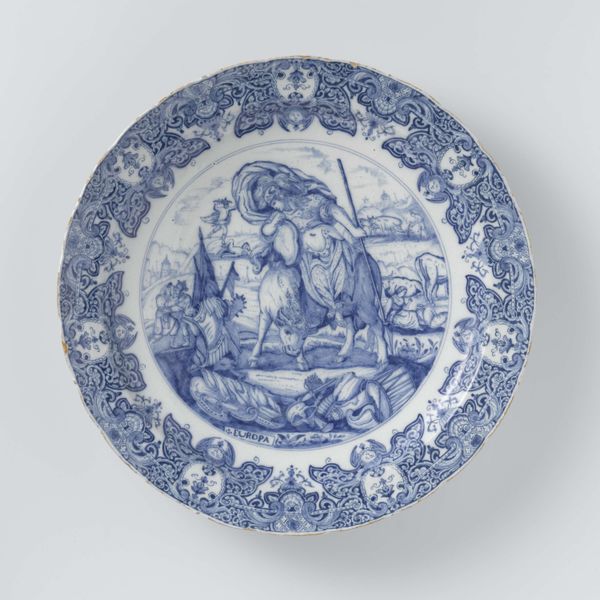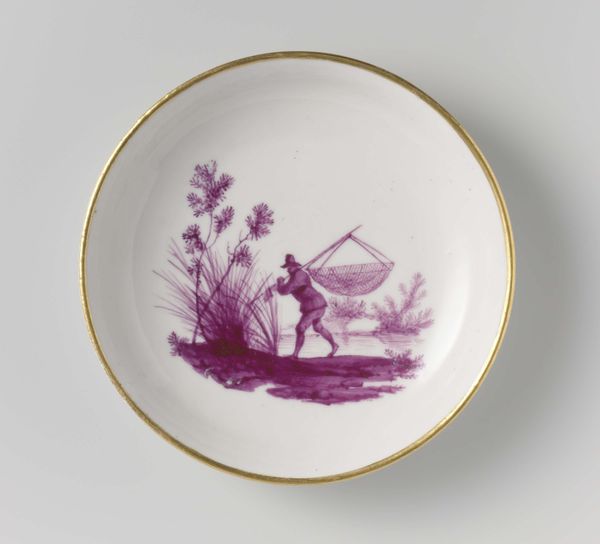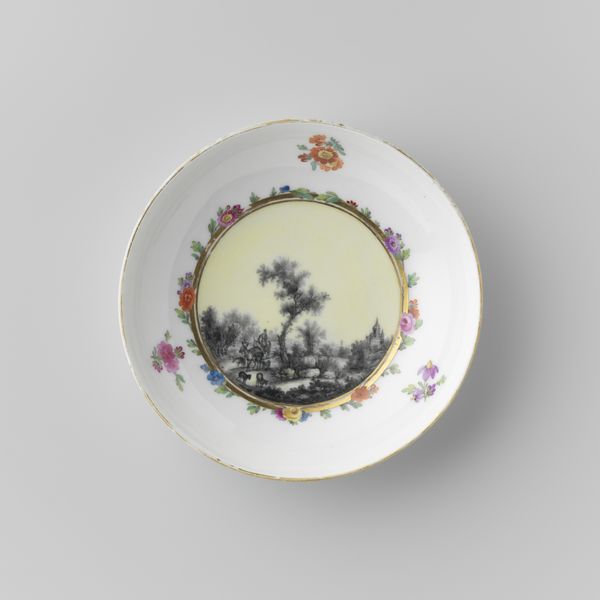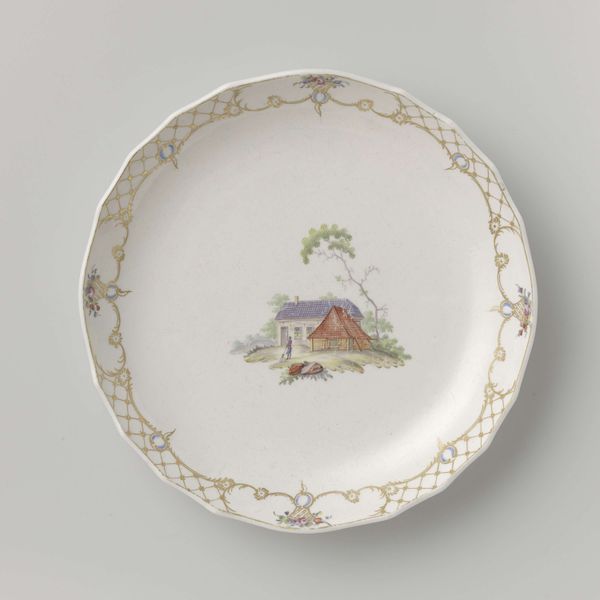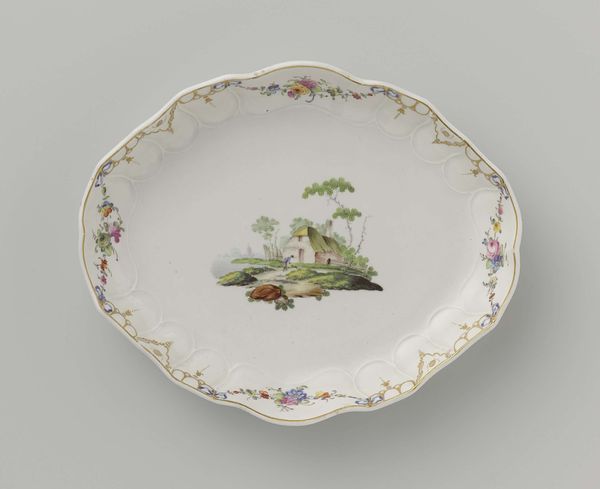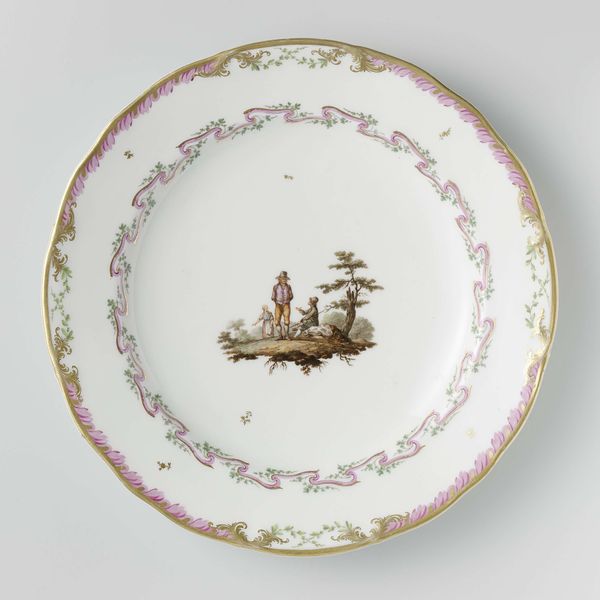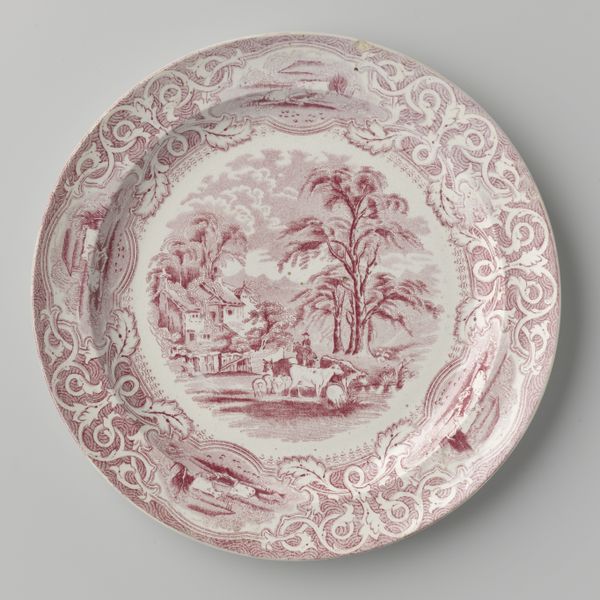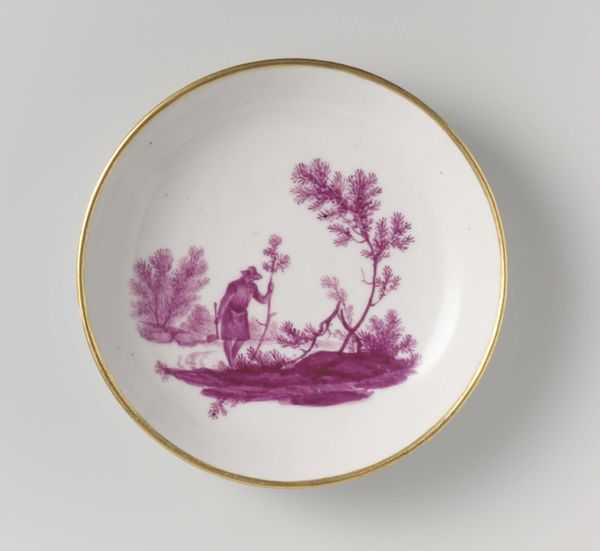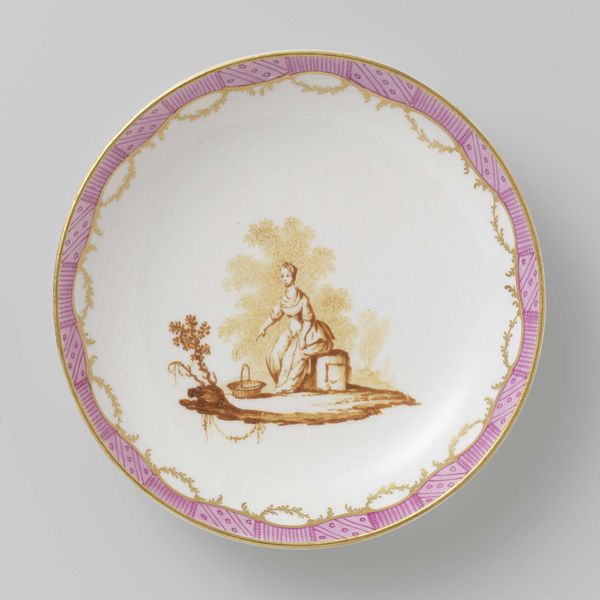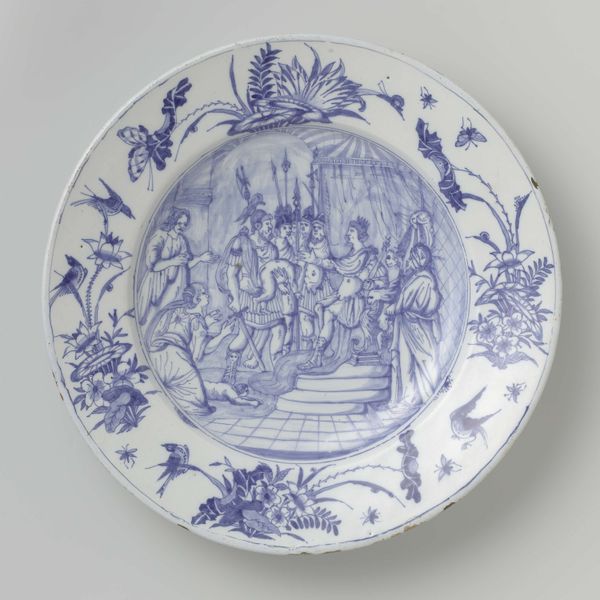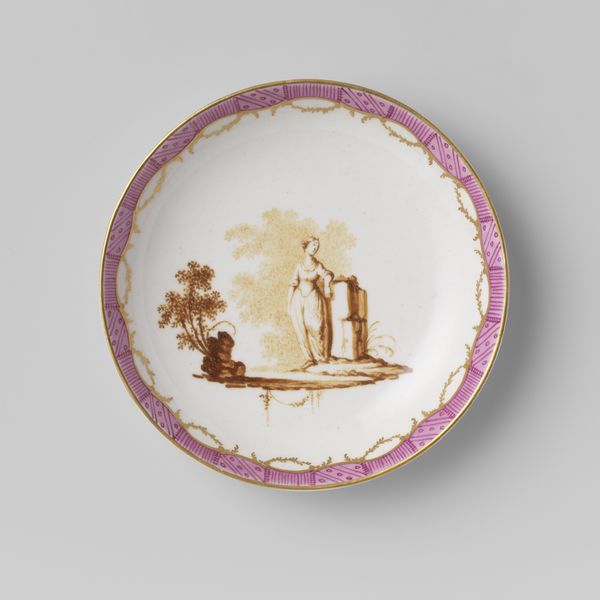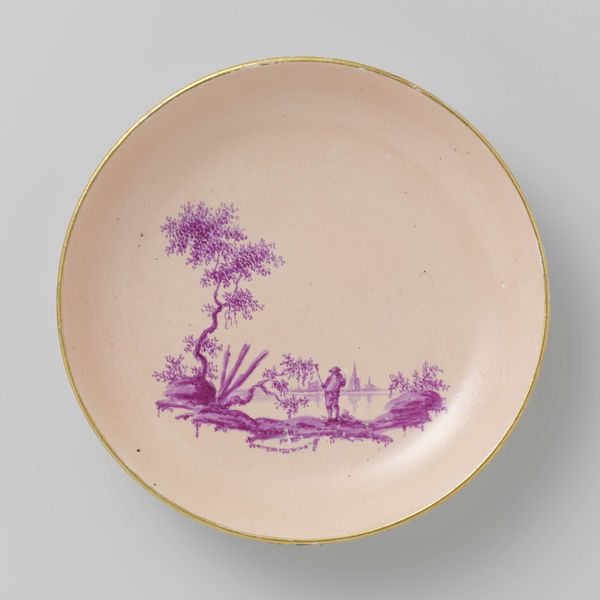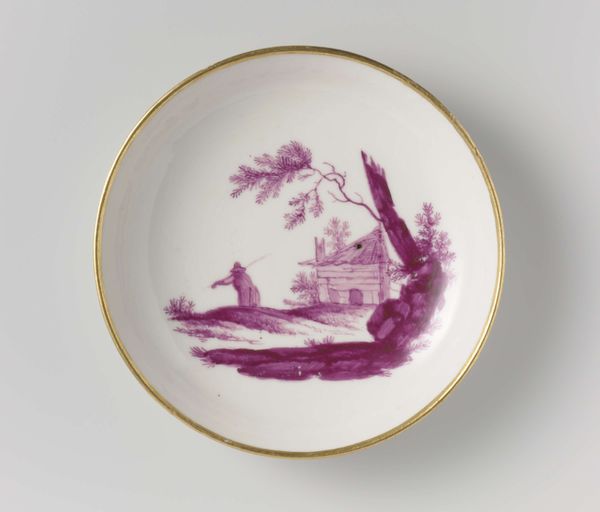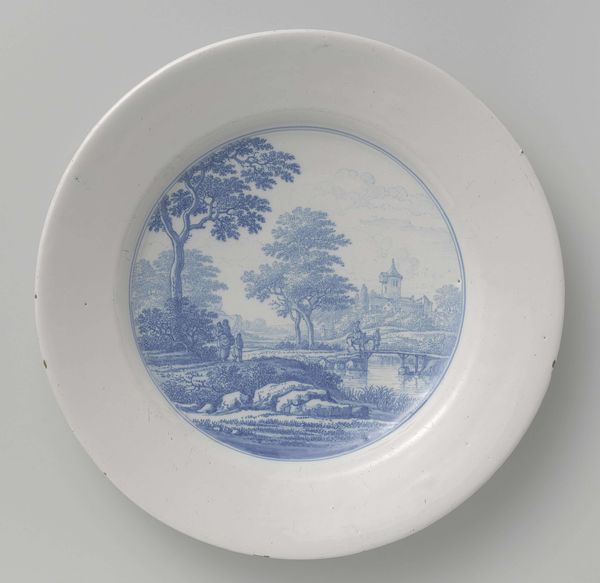
Dimensions: height 2.5 cm, diameter 12.8 cm, diameter 6.5 cm
Copyright: Rijks Museum: Open Domain
This is a cup and saucer, probably produced at the Etruria Works, decorated with an abolitionist scene. The scene is strikingly monochrome, set against the bright white ceramic surface. The image is framed by a decorative border of red and blue which gives structure to the composition and focuses the eye on the central scene. The scene is of a seated enslaved man, beneath a palm tree, which dominates the field of vision with its sharp angles and dense pattern. This contrasts with the subtle, more naturalistic rendering of the man himself. There is a clear semiotic contrast between naturalistic representation and pattern work. This pattern work gives a sense of visual restriction, perhaps reflecting the man's own restriction of freedom. The cup and saucer is a domestic object, used for rest and refreshment. To place this scene in such a context creates a destabilization between the act of leisure and the struggle for freedom. It poses questions about how we reconcile comfort with awareness of injustice.
Comments
rijksmuseum about 2 years ago
⋮
This cup and saucer were probably made for a Dutch anti-slavery committee. Such women’s groups sold embroidery, jewellery and chinaware for the benefit of enslaved people in Suriname and other colonies. The decoration is after a design by the English porcelain manufacturer Josiah Wedgwood, a leading supporter of the anti-slavery movement. The English abolished slavery in 1833. In Suriname and the Dutch Antilles this took place only in 1863.
Join the conversation
Join millions of artists and users on Artera today and experience the ultimate creative platform.
